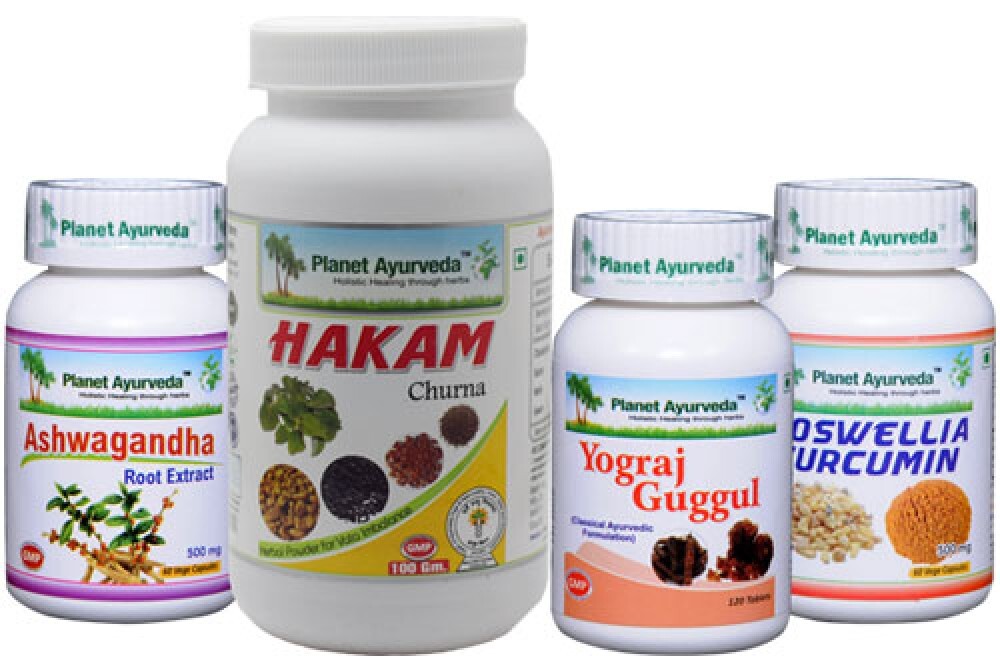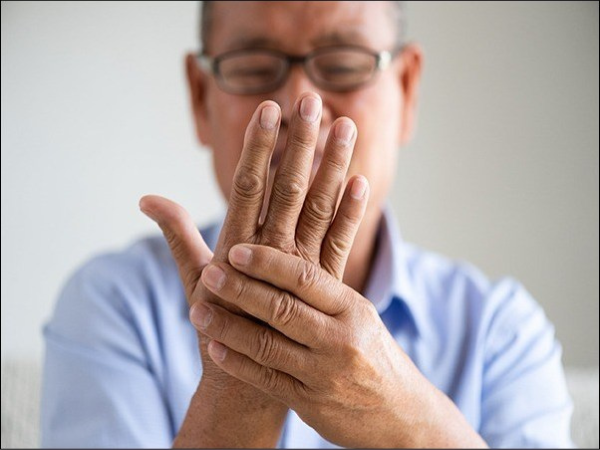Trigeminal Neuralgia Causes, Symptoms, And Treatment By Ayurveda

ABSTRACT
Trigeminal neuralgia is a disturbance of normal functioning of the 5th cranial nerve characterized by attacks of constant pain in the nose, mouth, and cheek area which is stabbing, burning, and intense in character. The incidence of this disorder is noted as 20/per 100,000 people and is considered to be linked with arterial hypertension and also increases with age. TN can be seen in 4–5/100,000 of the Indian population and is twice as common in women. TN is more seen on the right side of the face and rural population is affected more than urban.

INTRODUCTION OF TRIGEMINAL NEURALGIA
Trigeminal Neuralgia also known as tic douloureux, Fothergill disease or trifacial neuralgia is a debilitating chronic condition affecting the trigeminal nerve (responsible for transmitting pain and touch sensations from the head and face to the brain) and is characterized by unilateral lancinating or stabbing pain expressed as that of electric shocks starting after trivial stimuli as simple as smiling, talking, shaving, brushing your teeth or chewing and can last from few seconds to few minutes.
The trigeminal nerve is having three branches responsible for transmitting nerve impulses to different parts of the face including
- The ophthalmic branch that supplies the top portion of the face, including the forehead
- The maxillary branch supplies to the middle of the face, including cheeks, nostrils and upper lip
- The mandibular branch supplies the lower portion of the face including the lower lip and jaw area.
The pain is most commonly felt in the distribution of mandibular (V3) or maxillary (V2) divisions of the trigeminal nerve. Less common presentations include combinations of ophthalmic (V1) and V2, V2, and V3, or all three divisions. Solitary involvement of the V1 division is seen as rare. TN is considered to be the most painful disorder and can result in depression.
CAUSES OF TRIGEMINAL NEURALGIA
The exact cause of TN is unknown but as per studies have shown causes of TN can be divided into primary TN and secondary TN.
Primary
It includes the involvement of loss of myelin of the trigeminal nerve that might occur due to compression of the nerve by a blood vessel or a tumor as it exits the brainstem and this pressure on the nerve causes the wearing away of the protective outer layer(myelin sheath) of the nerve that causes pain signals to travel along with the nerve.
Secondary TN
When another medical condition or problem leads to TN then it is called secondary TN. It can include a stroke, tumor, or a cyst – a fluid-filled sac, arteriovenous malformation – an abnormal tangle of arteries and veins, multiple sclerosis (MS) – a long-term condition that affects the nervous system, facial injury and the damage caused by any surgery involving TGN such as dental surgery.
SYMPTOMS OF TRIGEMINAL NEURALGIA
Trigeminal neuralgia is more common in women than men and in older people (usually 50 and older), and the right side is affected more than the left side.
Symptoms may include
Impulsive electric shock-like jabbing, shooting pains spasms triggered by chewing, brushing teeth, speaking or touching the face that can last from a few seconds to several minutes, Pain along the track of the trigeminal nerve which includes the gums, teeth, cheek, and jaw, lips, forehead or eyes.
Unilateral facial pain that can focus at one spot or spread in a wider pattern, occurring at night while sleeping.
TYPES OF TRIGEMINAL NEURALGIA
TN is characterized by two forms
Typical or Type 1 TN
This type presents with episodes of sharp, sporadic, and intense pain and the patient may feel a burning sensation all over the face lasting for a few seconds or few minutes. This can continue for up to 2 hours with pain-free breaks.
Atypical or Type 2 TN
This is less painful and low in intensity and the patient generally feels a constant pain that can be stabbing or burning in nature but is difficult to control.
TRIGGERS OF TRIGEMINAL NEURALGIA
Simple activities that lead to movement or touching the face can trigger painful episodes. It includes
- Eating
- Drinking
- Touching the face for any reason like shaving, putting makeup on, washing face.
Impact or pressure applied to the face, especially to the cheek or jawline.
Strong gusts of wind or breeze blowing in the face.
- Brushing teeth, flossing, and using mouthwash.
- Talking and smiling.
DIAGNOSIS OF TRIGEMINAL NEURALGIA
Diagnosing trigeminal neuralgia involves
History and Neurological Examination
A detailed medical history of the patient is required to rule out the other causes of facial pain, frequency, and intensity of the pain, areas of your face are affected, what aggravates and ameliorates the pain, and getting to know about the nature of the pain. No specific test for trigeminal neuralgia is there so diagnosis can only be made on symptoms and description of the pain given by the patient.
MRI Scanning
A high-resolution, thin-slice or 3D MRI viewing the head, neck, and brain can help in the detection of tumors or a cyst – a fluid-filled sac, arteriovenous malformation – an abnormal tangles of arteries and veins, multiple sclerosis (MS).
TREATMENT OF TRIGEMINAL NEURALGIA
The treatment of TN includes nerve block injections that contain steroid medication or another agent injected at various parts of the nerve to reduce pain providing temporary relief. Multiple injections are required for achieving desired relief, and the effects may have different durations for different people.
Surgical procedures are also there to treat TN which include
- Rhizotomy
- Microvascular Decompression (MVD) Surgery
- Stereotactic Radiosurgery
- Acupuncture
AYURVEDIC APPROACH TO TRIGEMINAL NEURALGIA
In Ayurveda, a person is considered as a combination of body, mind, and spirit and it is important to treat all these aspects together to achieve balance. The ayurvedic approach to treating TN involves the correction of imbalance doshas by modifying a diet that includes avoiding foods like acidic foods, alcohol, caffeine, and spices as they stimulate the trigeminal nerve and involvement of fresh fruits and vegetables in the diet so that body can get antioxidants and minerals. Lifestyle changes like yoga, meditation, regular exercising, and avoiding stressful conditions can also be done. Herbal remedies like ginger, lavender, chamomile, and turmeric in the form of capsules, teas, or tinctures can also help in balancing doshas and reducing inflammation.
HERBAL REMEDIES FOR TRIGEMINAL NEURALGIA BY PLANET AYURVEDA
Planet Ayurveda has been providing 100% pure and chemical-free and prepared following strict Ayurvedic principles for the last 20 years. All the medicines are GMP certified and are made from the best quality herbs with ancient time-tested formulas and enriched with wisdom from ages. A trigeminal neuralgia care pack is available at Planet Ayurveda made with the best quality herbs prepared by experts to treat herniated discs. It is 100% pure and chemical-free and prepared following strict Ayurvedic principles. The pack includes
Product List
- Hakam Churna
- Boswellia Curcumin
- Yograj Guggul
- Ashwagandha Capsules
Product Description
1. Hakam Churna
Hakam Churna is a combination of chandershoor or Lepidium sativum, Kalaunji or Nigella sativa, Mehika or Trigonella foenumgraecum, and ajwain or Trachyspermum ammi. It is used to treat gastric issues like upset stomach and indigestion as it is the root cause of all diseases and in the long term can affect vata dosha which then localizes in joints and muscles and causes intense pains and musculoskeletal disorders.
Dosage: 1 tsp twice daily with warm water after the meal
2. Boswellia Curcumin
It is a combination of extracts of Boswellia serata and Curcuma longa which acts on osteoarthritic chondrocytes. Boswellia strata and Curcuma longa have anti-oxidative, anti-inflammatory, and anti-catabolic activities, suggesting a protective effect of these extracts on cartilage. Curcumin extract from culinary turmeric is known to have an effect on many inflammatory-based musculoskeletal concerns including degeneration. Boswellia contains boswellic acid that helps in blocking inflammatory pathways like lipoxygenase and cyclooxygenase giving relief from aches and pains that stem from pinched nerves caused by inflammation.
Dosage: 2 caps twice daily after meal with warm water
3. Yograj Guggul
Yograj Guggul is a combination of Shuddha Guggulu or Commiphora mukul, Chitraka or Plumbago zeylanica, Pippali or Piper longum, Jeeraka or Cuminum cyminum, Devdaru or Cedrus deodara, Ela or Elettaria cardamomum, Amalaki or Emblica officinalis, Mustaka or Citrus rotundas, Haritaki or Terminalia chebula and Ardraka or Zingiber officinale etc. It is very helpful to maintain Vata balance and treats various types of diseases related to joints, bone marrow, and muscles.
Dosage: 2 tabs twice daily after a meal with warm water
4. Ashwagandha capsules
It is prepared using a standardized extract of Withania somniferum also known as ashwagandha and provides benefits against many human illnesses such as diabetes, arthritis, depression, and epilepsy. It is also having palliative effects such as rejuvenating, regenerating, analgesic, and growth-promoting effects. The main active compound, withaferin A from the extract of the root has a potential analgesic effect for both postoperative and neuropathic pain and shows a potential drug or supplement for the treatment of pain.
Dosage: 1 capsule twice daily with warm water, after meals.
Contact Planet Ayurveda Support Team to provide you the costing / ordering and delivery information at – costing.planetayurveda@gmail.com or Call at 0172-521-4030 (India), +91-172-521-4030 (Outside India) or Whatsapp at (+91) 9915-593-604
CONCLUSION
Trigeminal neuralgia is a serious problem and the current ways of dealing with these problems include surgeries or nerve blocks. The current treatments for these conditions attempt to cover up the symptoms instead of actually solving the problem; however, in Ayurveda, these conditions are curable as the body, mind, and spirit are focused. Ayurveda involves the correction of imbalanced doshas by modifying diet, lifestyle changes, and Herbal remedies. If these methods can be put together, it will result in a far superior form of treatment compared to modern methods of treatment. It will actually correct the problem, and the patient will live a normal, healthy life. In case of any query related to your doubts, you can always connect with our experts at www.planet ayurveda.com.





